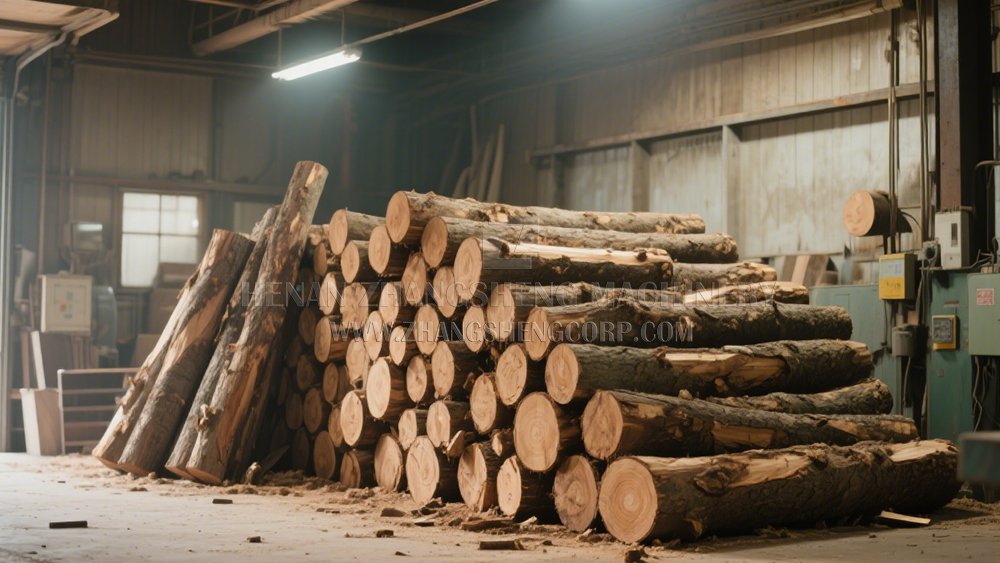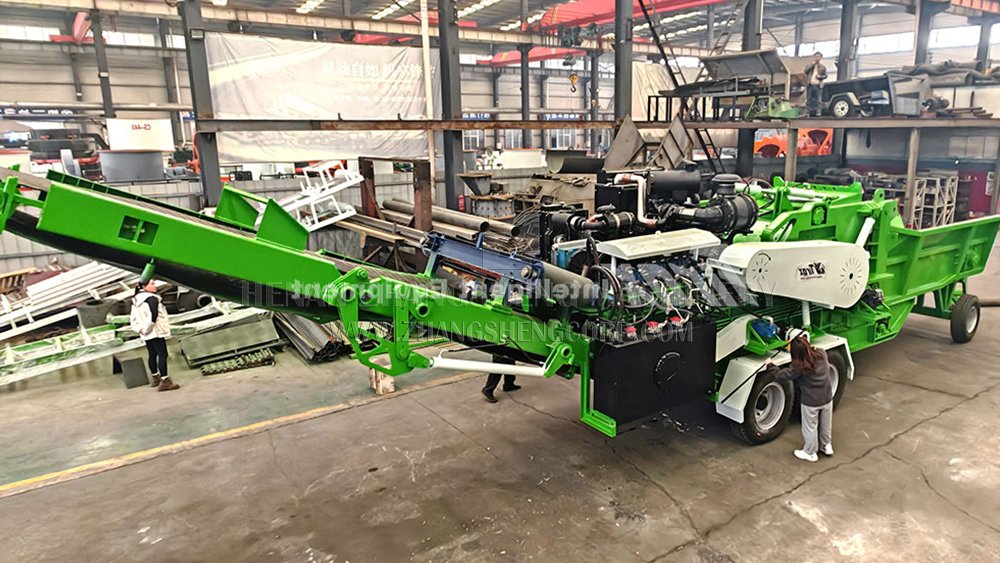Choosing the right wood chipper can feel like a big decision with so many options out there 7. It is important to know what you need so you don't end up with a machine that is too small or too big for your work.
To choose the right wood chipper, I recommend starting by analyzing the type of raw materials you'll process, considering their size and hardness, determining your desired chip output and processing capacity, and evaluating how often you will use the chipper to match it with the appropriate feed size and power source 717.
I’ve spent 14 years in heavy equipment export, with 8 years focusing on wood processing machinery 19. Trust me, I've seen countless businesses make the mistake of buying the wrong size chipper. Our factory has over 20 years of experience designing and manufacturing wood chippers tailored for diverse international markets 911. We produce over 260 machines annually and ship to more than 60 countries, giving us deep insights into what works best for different needs 7812. The goal is to find a chipper that maximizes your efficiency and saves you money in the long run 8.
How big of a wood chipper do I need?
Are you unsure if a small chipper will handle your branches or if a large one is overkill? It's a common dilemma, and picking the right one is crucial for your project's success.
The size of wood chipper you need depends on the maximum diameter of wood you plan to process, your required hourly processing capacity, and the desired end-use of the wood chips, as these factors determine the necessary feed size, engine power, and overall machine robustnes 7.

When I help customers choose a chipper, I always start with their raw material 7. What kind of wood are you chipping? Hardwoods like oak need more robust chippers than softwoods like pine, and you need to consider if you'll be handling just branches, bark, or other wood waste 7. This analysis helps determine the appropriate feed size and blade configuration 7. If your raw materials are large in diameter, you will need a chipper with a larger feed size to ensure efficient processing 7. After understanding the raw material, we look at the processing capacity. Our wood chippers have different capacities, measured in tons per hour. For a small business or homeowner, a chipper that can process 1-2 tons per hour might be enough 9. But if you are a large company or process a lot of wood, you might need a chipper with a capacity of 5-10 tons per hour or even more 9. Choosing a chipper with too low a capacity will create bottlenecks, while too high a capacity wastes resources 9.
What factors should I consider when determining the right size?
Are you confused by all the different specifications and unsure which ones matter most for your needs? Let's break down the key factors.
When determining the right wood chipper size, I focus on the type and size of raw materials, the desired chip output and processing volume, your available power source, mobility requirements, and the expected frequency of use, as these elements directly influence the chipper's necessary feed size, power, and overall design 7917.
| Factor | What to Consider | Why It Matters |
|---|---|---|
| Raw Material Type & Size | What types of wood will you process (hardwood vs. softwood, branches, logs, bark, mixed waste)? What is the maximum diameter you'll be feeding? 7 | Different wood types require different chipper specifications 7. The feed size is critical; if material is too large, it won't fit or will jam 7. |
| Processing Capacity | How much wood do you need to chip per hour or per day? What is your typical volume? 79 | This dictates the chipper's throughput rate; choose a capacity that matches your production needs to avoid bottlenecks or wasted resources 9. |
| Chip Output & End Use | What size and uniformity do you need the chips to be? Will they be used for biomass fuel, paper-making, mulch, or something else? 7 | The end use impacts blade configuration and the chipper's ability to produce uniform chips 7. |
| Power Source | Do you need an electric, gasoline, diesel, or PTO-driven chipper? 123 | Availability of power and desired mobility will affect this choice. Diesel engines, like those we offer from Cummins or Perkins, minimize maintenance concerns 1. |
| Mobility | Do you need a stationary chipper for a fixed location, or a mobile unit that can be towed or tracked to different sites? 24 | Mobile units offer flexibility for various job sites, while stationary units are often more robust for high-volume, fixed operations. |
| Frequency of Use | Will you use the chipper daily, weekly, or just a few times a year? 17 | Regular use justifies a more durable, higher-capacity machine, while occasional use might suit a smaller, rental-type model 17. |
I've learned that a common pitfall is underestimating the true volume or the largest diameter of wood you'll handle. For example, if you consistently process hard, dense wood, choosing a chipper with a robust engine and a smart feeding system, like ours, will significantly improve efficiency and prevent overloads 1. This foresight prevents buyer's remorse and ensures your investment pays off 8.
The difference between large and small wood chippers
Are you trying to decide between a compact, easy-to-move chipper and a powerful, stationary one? Understanding their core differences can help clarify your choice.
The primary difference between large and small wood chippers lies in their processing capacity, maximum feed diameter, engine power, mobility, and intended applications: small chippers are for homeowner or small business use with limited soft wood, while large industrial chippers handle high volumes of various wood types for commercial operations 79.
From my perspective, the distinction between small and large wood chippers isn't just about physical size; it's about capability and purpose. Small chippers, like our Garden Series 600 or 800 models, are excellent for homeowners or small businesses, handling branches up to 12cm or 15cm in diameter respectively 23. These are typically more compact, easier to move, and powered by smaller engines. They are perfect for occasional yard clean-up or small-scale landscaping 7. In contrast, large industrial chippers, such as our ZSYL-1263-197HP or ZSYL-1585-235HP models, are built for heavy-duty, continuous operation 25. These units can process wood up to 40cm, 50cm, or even 150cm in diameter for horizontal grinders 47. They feature powerful diesel engines (like Huadong, Weichai, Cummins, or Perkins) 1235, large feeding mechanisms 4, and high throughput rates, often ranging from 5-10 tons per hour or more 9.

When should you choose a large vs. a small wood chipper?
Are you torn between the convenience of a small chipper and the raw power of a large one? Let's figure out which one suits your specific needs.
You should choose a small wood chipper for light-duty, occasional use involving small branches and limited volumes, while a large industrial wood chipper is necessary for high-volume, continuous operations, processing wider diameters of diverse wood materials, or commercial and industrial applications 7917.
| Feature | Small Wood Chipper (e.g., Garden Series 600) | Large Industrial Wood Chipper (e.g., ZSYL-1263-197HP) |
|---|---|---|
| Max Feed Diameter | Typically up to 12 cm or 15 cm 23. | Can handle from 25 cm up to 50 cm for chippers, and up to 150 cm for horizontal grinders 4710. |
| Processing Capacity | Lower, suitable for personal or small-scale needs (e.g., 1-2 tons per hour) 9. | Much higher, designed for commercial or industrial volumes (e.g., 5-10+ tons per hour) 9. |
| Power Source | Often electric motors or smaller gasoline engines. | Powerful diesel engines (e.g., 197HP, 235HP) 25. Some can be electric or PTO-driven. |
| Mobility | Highly mobile, often with wheels for easy towing or manual movement. | Available as stationary units or large mobile units with heavy-duty tires or tracks 2356. Less agile due to size. |
| Applications | Backyard clearance, light landscaping, occasional brush removal, creating mulch for home gardens 7. | Biomass energy production, paper industry, large-scale land clearing, commercial landscaping, waste management, construction debris processing 7811. |
| Cost & Investment | Lower initial investment, typically less expensive to maintain 817. Makes sense if rental costs are high for frequent use 17. | Higher initial investment, but designed for continuous, professional use, offering long-term efficiency and reduced operating costs for high volumes 817. |
When advising clients, I always emphasize that the "best" size isn't universal; it depends on your specific operational demands. If you're a professional arborist or running a biomass plant, a large industrial chipper is a necessity for its efficiency and durability 7811. However, for occasional use on a small property, a compact chipper provides excellent value without unnecessary expense or complexity 17. The key is aligning the chipper's capabilities with your actual work volume and material types 7.
Conclusion
Choosing the right wood chipper size means understanding your raw materials, desired output, and operational needs 7. Small chippers are ideal for light, infrequent use, while large industrial models are essential for high-volume, diverse material processing 7917. By considering these factors carefully, you can select a chipper that maximizes efficiency and profitability for your business 8.


